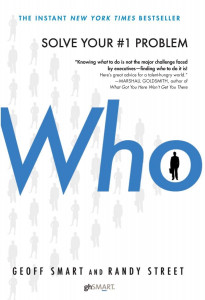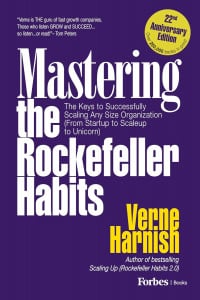It’s a never-ending, ever-evolving, sometimes revolving door of a topic with our clients.
“How do I recruit, reward, and retain good employees?”
We shied away from it at first because let’s face it — is it really a marketing question? Then we realized: Yes, actually, it is.
The relationship between employer and candidate begins long before a job opportunity becomes available and long before the candidate starts actively looking.
The job field is plowed and seeded well in advance by the company’s marketing. Instead of prompting the audience to buy a product, however, the call to action here is to attract the best candidates. The goal is still a matter of matching up supply with demand, presenting your brand to the right audience, and accelerating efforts to persuade and incite action.
RECRUITING
“What is a resume? It is a record of a person’s career with all of the accomplishments embellished and all the failures removed”
– CEO George Buckley
When we create a recruiting ad for our clients, it serves two purposes. Obviously, it lets those looking for work — or who are wanting to switch companies — know that you’re hiring. Just as important, though, that ad lets the general public know about the company’s high standards: background checks and drug tests, and that the applicant’s work ethic should align with company standards. Not only does the customer on the other end of that ad gain greater trust and respect for the company, but they also won’t hesitate to tell a friend who is out of work or dissatisfied with their current job, “Hey, I hear is hiring! They seem like nice people!”
Attracting applicants is just the first step, though. Once you start that candidate courtship, what questions do you ask, and what do you listen for in their answers?
 There is an intriguing book called Who: The A Method for Hiring by Geoff Smart. The authors refer to “voodoo hiring methods,” some of which you may have been guilty of using in the past, such as group interviews and clever questions that have nothing to do with the job.
There is an intriguing book called Who: The A Method for Hiring by Geoff Smart. The authors refer to “voodoo hiring methods,” some of which you may have been guilty of using in the past, such as group interviews and clever questions that have nothing to do with the job.
Instead, the book advises you how to hire “A Players” consistently by rethinking the questions and quantifying what the job is before qualifying the person. In Who, Smart defines an A Player as a candidate who has at least a 90 percent chance of achieving a set of outcomes that only the top 10 percent of possible candidates could achieve.”
In other words, specify and declare! Think “All-Star Goaltender” rather than “Good Hockey Player.” To start the process, Smart suggests you start by creating a scorecard with three parts:
- What is the job’s core purpose?
- What does success look like for this role, including the metrics to measure the results?
- What behaviors, skills, and values match this role?
By beginning with this set of outcomes and competencies that define a job well done, you’ll be likely to find the people who best fit your company culture. Focus on what and match that with who.
Finally, when it comes to the dance of courtship called recruiting, speak to the field of candidates about what they want to know before they waste their time — or yours. Don’t hide information. Clearly answer the questions on their minds: What’s the pay? Is there a guarantee of hours, or will they be sent home if there’s no work? How many openings are there?
Meanwhile, you can allow your classified ad to reflect your admiration for their values. Asking, “Do you have the tools you started with?” means you recognize the guys (and gals) who maintain their tools, cherish them, and don’t loan them out. They’re focused and meticulous. You’re advertising that without saying, “We are looking for someone who is focused and meticulous.” “Focused and meticulous” is nebulous and subjective.
“Tools you started with,” on the other hand, is a concrete, relatable mental image.
REWARDING
According to CareerBuilder, almost 40% of employers are concerned they will lose their talent and 25% of those employees plan to change their work. Once you get your A Players in the door, how do you make them want to stay?
Look for the mavericks among the new hires that bust out of the corral early on and exceed your expectations. Don’t allow them to become just as quickly disillusioned. Assign them a mentor to guide them toward building skills that not only benefit you but are also part of a plan for their own career development. Build that plan together as a tool for measuring progress and success.
Training can be a two-way street! Use your new hire to train your team by encouraging them to share insights and past experiences. Hold them accountable for sharing and reward them for it.
Recognize your “A Players.” Research from the Center for Creative Leadership shows only 14% of formally recognized high performers are seeking other employment. When employees aren’t recognized, that number jumps to 33%.
Reward them in a way that they want to be rewarded. While it is somewhat customary for a manager to ask about a new employee’s reward preferences, as time passes what motivates your employees may change. Make a point of asking them in their annual review! The desire for a cash bonus may be replaced by extra paid time off.
An afternoon field trip may be a healthier option than “free pizza Friday.” Who on your team would appreciate and benefit from going to the next convention or trade show?
RETAINING
 Chances are you have a copy of a book we’ve mentioned before, Verne Harnish’s Mastering the Rockefeller Habits. Now may be a good time to dust it off and review the three main habits outlined: setting priorities, using data to make decisions, and finding the organization’s rhythm.
Chances are you have a copy of a book we’ve mentioned before, Verne Harnish’s Mastering the Rockefeller Habits. Now may be a good time to dust it off and review the three main habits outlined: setting priorities, using data to make decisions, and finding the organization’s rhythm.
Your company has some priorities that rarely change, such as its core values and long-term “Big Hairy Audacious Goals” (BHAGs). There are some priorities, especially more individualized priorities, that are more often subject to change. Each year, in addition to setting annual goals for the company, each department and employee should also set quarterly goals.
Taking action on those goals requires data, tracked in real time, in order to make course corrections. You need to set daily, weekly, and monthly metrics, or Key Performance Indicators (KPIs), that you and your team track. It is a good practice to make sure someone owns each of your KPIs and holds them accountable.
Like a train chugging along, your company must maintain a reliable rhythm to make sure everyone stays on track. In our office, our daily tasks are broken down into five manageable bites. Officially, it’s the PDM, or “Personal Daily Manifest.” It’s a mandatory guide to our day, written in pencil at the start of the workday, so items can be swapped out according to what is most imperative if something unexpected pops up. The important characteristics of the Top Five are: it sets the rhythm, it holds us and our staff accountable to our tasks, and it provides concrete data to track progress.
Investing in employee learning and development shows you care about them and are devoted to helping them grow. A workplace where everyone can work together, and all have the same level of happiness and career satisfaction is hard. It takes a lot of work with organizational structure, culture, and open conversations where the expectations of both parties can be clear. It can be done, but it doesn’t seem as though it runs itself once it’s built. Your employees want the same thing: career road maps, clear objectives, shared learning, and better alignment in your workforce.
Happier workers inside your building mean a better persona in the public eye, and if what is being communicated by your marketing aligns with what the public sees, that makes all of us preposterously powerful Wizards!
- My Spock Meets Don Quixote - February 7, 2025
- Our Simple, 6-Step Sequence for Cementing Your Success - January 23, 2025
- Drumming Up Passion and Commitment - January 15, 2025

